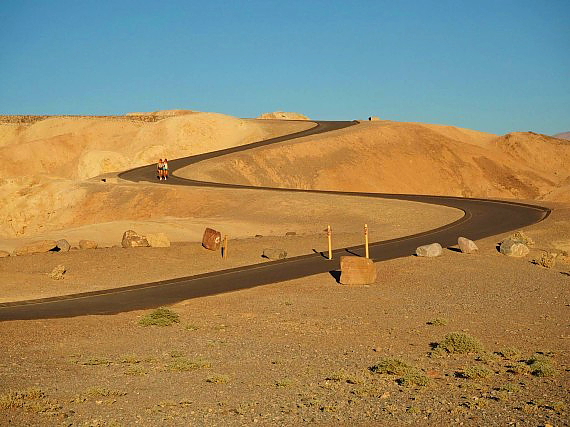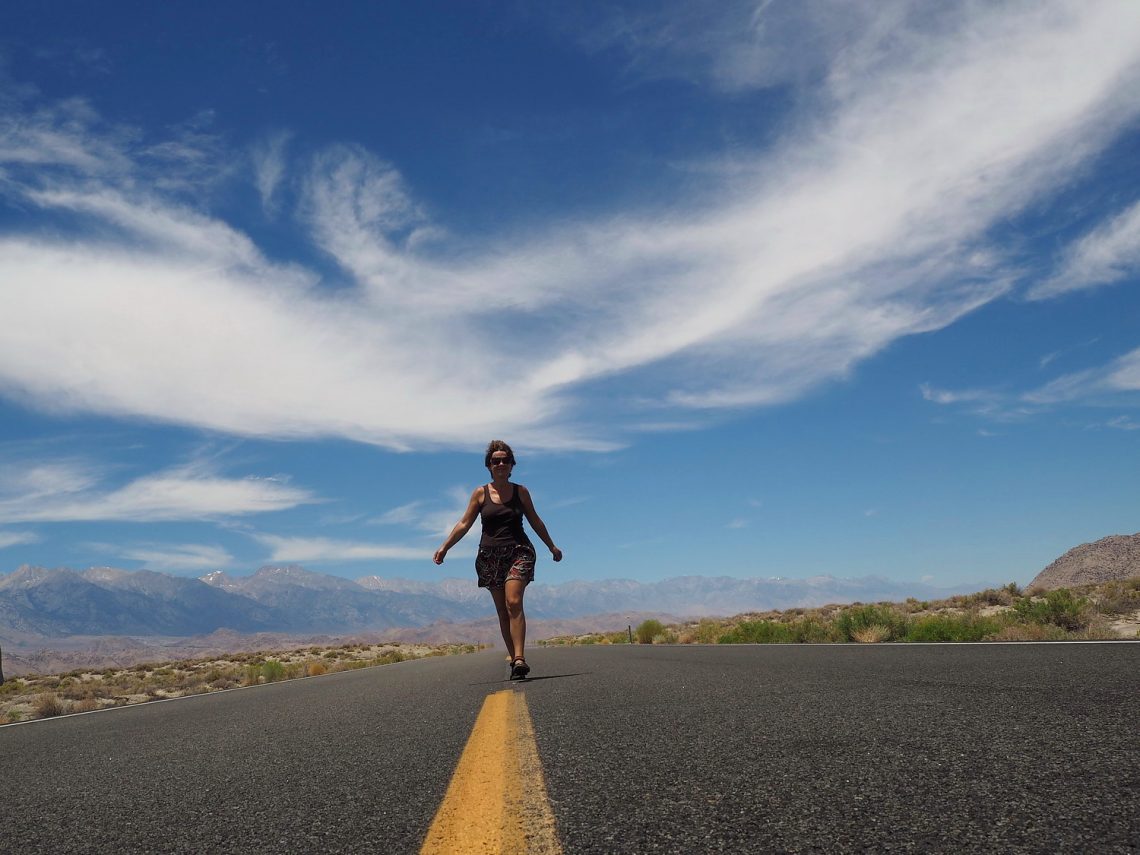Even though I had twice visited Death Valley, situated on the border of California and Nevada, I put it on my list once again. This is not a place that you easily get bored of.
I knew what I could expect, but still, I did not think that I would experience the hottest summer’s day of my life. It was a record-breaking hot day when I showed up.
The road into Death Valley is a memorable experience in itself, especially if like me, you like to drive alone for hours. I simply love these rolling roads to nowhere, especially when there is no crowd. On some of the roads I had a feeling that I was on a roller coaster, forcing me to slow down.

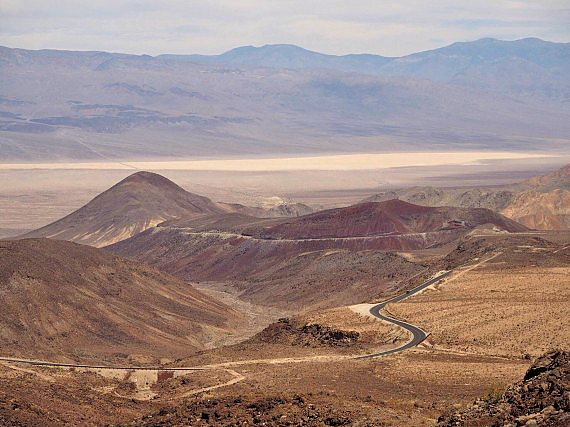

When I arrived at the entrance to the National Park, I saw that the small ticket office was empty. Instead there was a sign asking visitors to put their entrance fee in a small box. While I had seen this kind of “honesty box” in other parks, that was only before or after opening hours, for example when I went to see the sunrise. I shrugged my shoulders in surprise, but drove on.
There are a number of interesting stops all over Death Valley. My first stop was at the Mesquite Flat Sand Dunes. It was out of the question to hike across these dunes: when I stopped the car and got out, I felt like somebody was blowing hot air into my face with a gigantic hairdryer. The hot wind burned my skin and took hats and scarfs off other visitors. The whole scene was surreal.
Near the parking lot were some Asian tourists shooting selfies in front of an interesting shaped tree. Unlike their usual habit, they did not take their time with thousands of poses and pictures – they moved fast and quickly escaped back to their air-conditioned cars. I am sure that if the weather was more humane I would have seen hundreds of visitors with selfie sticks at this place, but in these conditions, nobody had the energy to conquer the sand dunes.
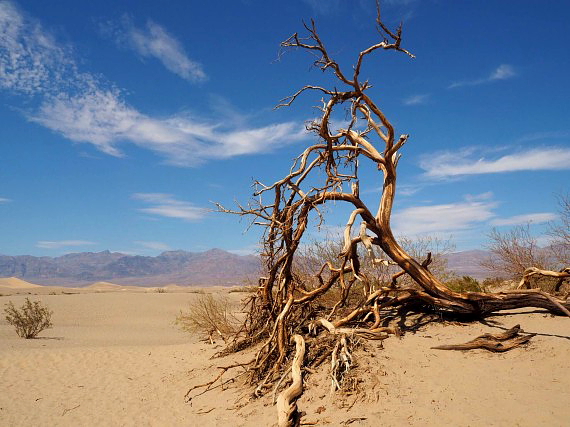
I was shaking in the 50° Celsius hot weather
I decided to go to the toughest part of the Valley and drove to Badwater Basin. At 86 meters below sea level, this is the lowest point of both Death Valley and North America. Needless to say, this point was the hottest. The display on the car showed 122° Fahrenheit – or 50° Celsius! After walking only a few minutes, my skin was burning, my legs were shaking and I got goosebumps. Afterwards I read on the internet that this is a very “normal” symptom of such heat. Many visitors didn’t even bother to get out of their cars, they simply took pictures through the windows, or rolled down the window just a fraction, until they could stick out their camera lens.
The hottest temperature on earth, 56.7° Celsius was measured here. We were not very far from that record.
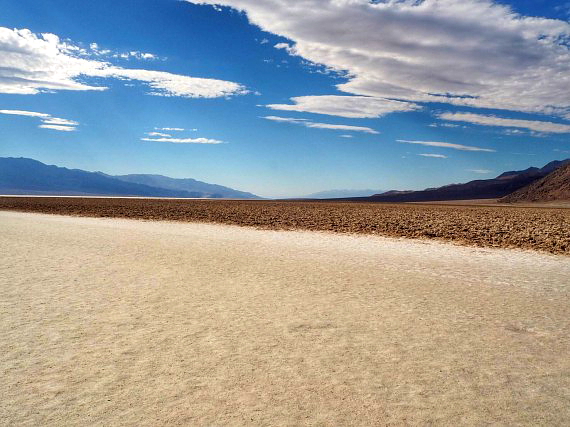

There is a picturesque, 14.5 km road nearby. It is called the Artists Drive, a road through a canyon colored with minerals and ore. The parking spaces were empty – in this brutal heat, nobody wanted to go even for a short walk.
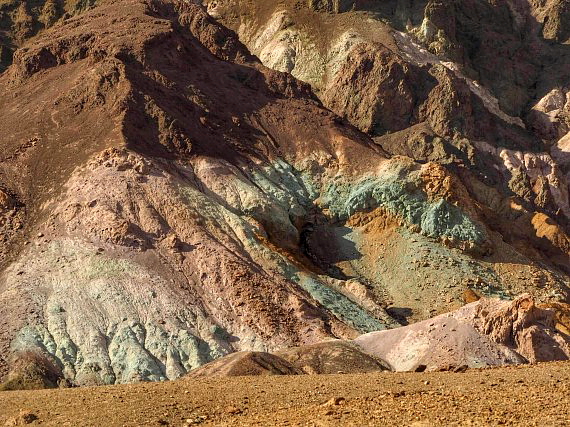
In the middle of the park, I found a shop with a sign that said you could only go inside if wearing a t-shirt or top. Many tourists had to go back to their cars to put some clothes on!
Every American National Park is nicely organized, for example there is always a drinking fountain where you can fill your bottles. The drinking fountain was not missing here either, but the water coming from it felt as hot as fire. As a result, visitors had to buy a bottle of water for $2.75 Dollars.
There was nobody sitting in the Tourist Information Center, but I realized that it would be impossible to keep the tiny booth cool all day. Next to the road were many signs warning about the extreme hot weather and reminding people to drink plenty of water.
In the evening, I drove up to Dante’s Peak, which is situated 1700 meters above the surreal landscape. It was possible to see for miles because of the dry air and it was refreshing to experience some cooler air.
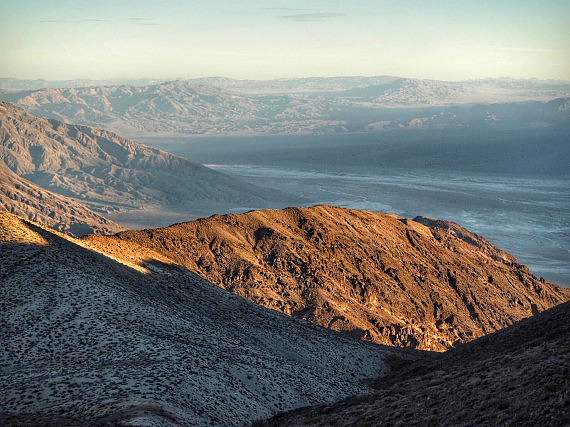
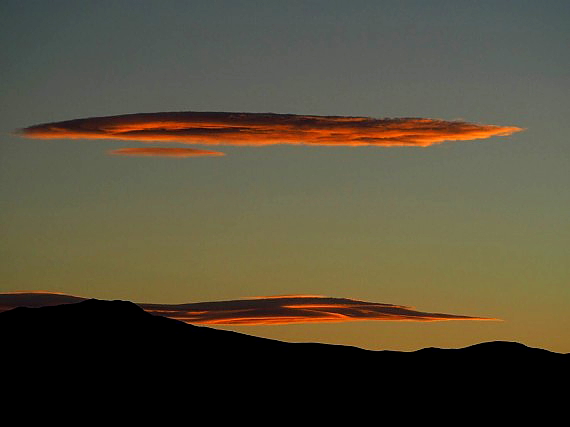
The sun is rising above Zabriskie Point
The next day I set my alarm clock for 4.30am. I was already on my way at 5am and at 5.30am, I was waiting for the sunrise with my camera at the prime sunrise watching spot at Zabriskie Point. The landscape was familiar from the movie with the same name, which I had seen a number of times as a teenager. I had put a sweater in the car thinking that desert mornings can be colder, but here it was more than enough to wear a t-shirt.

First, I could see some pink shades and afterwards, the sun slipped out and threw some harsh shadows to the rocks. Dozens of tourists watched this picturesque landscape alongside me, while slipping their coffees from a thermos. At this time of the day, the lights are far more beautiful than in the midday heat.

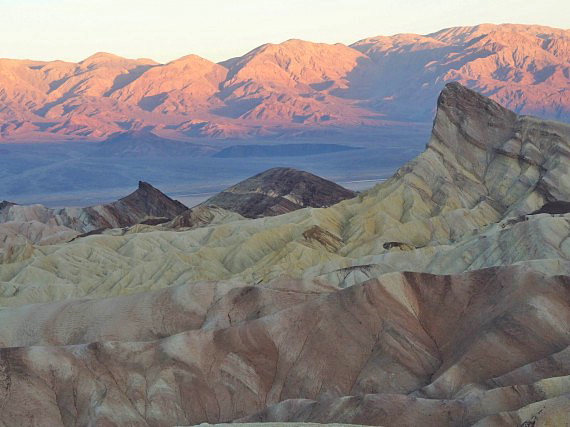
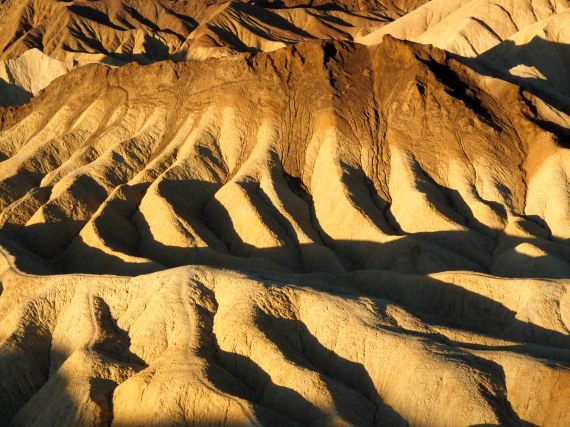
By this stage I had driven along all the available roads, just the closed ones (for example the one to Scotty’s Castle) and the dirt roads were left out, as you cannot travel on these with a rented car. The most exciting of these is the “Devil’s Golf Course”: a bumpy road named after the rough surface which consists of salt crystals. Luckily I had seen this road before on another tour.
The dancing lady and the worker’s hotel
Within the National Park, accommodation is very limited, but there is a fantastic place not that far from the Death Valley Junction crossroad called the Amargosa Opera House and Hotel. Each of its walls is full of history and beauty. I booked a room here simply because it was the cheapest option with acceptable reviews on my favorite booking site. I did not know the amazing story I was about to learn.
A borax mine used to operate here and a large house was built for the workers. After a furious article, which described the place as deplorable, the managers made some changes to the living conditions. They added a medical station and a lovely theater. However, after the mine closed in the forties, the whole complex stood empty for two decades.
In 1967, a well-known dancer from New York – Marta Becket – got a flat tire right here during a tour. While her husband changed the tire, she looked through the window of the house. It was love at first sight, and they decided to move in. They found the owner of the building, rented it from him and Marta herself, started repainting the large theater room. She danced every day, often to an empty room, and soon a sarcastic article was written about her strange habit in a magazine.
But she was not the kind of woman to run away or become bitter. Instead she painted people on the theater walls to prove she had an audience. Her pictures were not just any kind of pictures, and I could not guess that they were by somone who was not a real painter.
When Marta finished decorating the theater, she started with the worker’s hotel and she painted some wonderful murals in the dining room, the corridors and some rooms as well. As a real renaissance person, she not only composed music, wrote dance pieces and designed the theater scenes, she even sewed her own costumes – in addition of course, to dancing.
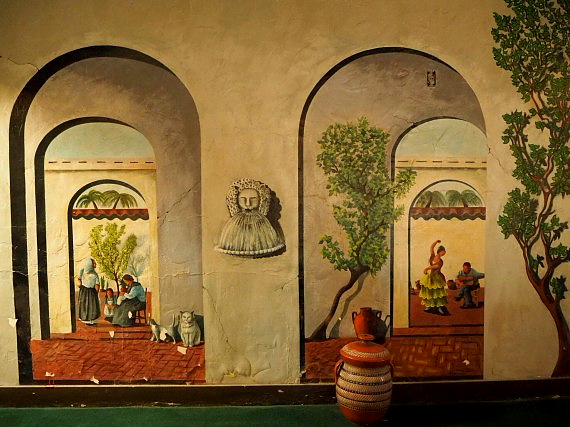
The renaissance woman is still alive
As Marta did not get much income from the theater, she taught ballet to children and sold her paintings in a New York gallery. Although she retired in 2012 and is now over 90, she still lives in the hotel. Her husband left her after five years living in the desert, but luckily she found a new partner later the same year.
In recent years, a few rooms have been rented out. The theater also opens during the main tourist season, between October and May. Jenna McClintock now dances on its stage. She has been here since she was six years old and first saw Marta perform. This inspired her to choose dance as a career and she is continuing this tradition with gratitude.
I was simply amazed by the story and I loved the hotel. Although the rooms were quite old with no fridge or TV, we could use those provided in the large dining room. Despite this, I much preferred staying here instead of in a sterile room in a big hotel chain. The half-empty hotel, where – according to the receptionist – ghosts also live, perfectly matches the mood of the Death Valley.
